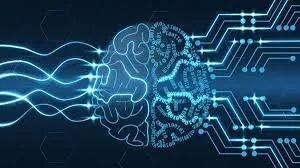Introduction
Natural language processing, deep learning, speech recognition, and pattern identification are just a few artificial intelligence technologies that have consistently advanced in recent years. This has helped chatbots grow significantly.
More and more, chat robots are being employed in domains like education, e-commerce customer support, public place service, intelligent equipment, etc., rather than only as entertainment devices, as most people still believe them to be. I am sure you are aware of Google Assistant. Have you ever wondered how these chatbots and google assistants work? These are built using the Seq2Seq model. In this article, we will see sequence-to-sequence models.
Learning Objectives
In this article, we will learn the following:
- More about the seq2seq model, where these models are used.
- How these models work is like the basic architecture behind them.
- Learn the types of seq2seq models and how they are different.
- Understanding the challenges of using these models.
This article was published as a part of the Data Science Blogathon.
Table of Contents
What is a Seq2Seq Model?
In many tasks, deep learning models have similar accuracy when compared to humans. These models can more efficiently and with good accuracy map input to output. But one of the challenges is to map one sequence to another with accuracy similar to that of a person. This is known as machine translation and is found in speech or language translation.
The deep learning model is essential for machine translation to produce results in the appropriate order and sequence. One of the major difficulties in translating a sentence, say from English to Chinese, is that the output sequence may differ from the input sequence in terms of the number of words or the length of the sentence.
In simple words, seq2seq is a model in machine learning where it is used for translation tasks. It takes a series of items called input and gives another series of items called output. This model was first introduced by google for machine translation. Before this model was introduced, it was used to translate and gives the output with grammar mistakes and no proper sentence structure. This model bought a great revolution in machine translation tasks. Previously, when a sentence was translated into another language, then only one particular word was considered, but the seq2seq model considers its neighbor words in order to translate. This gives the result a logical structure. This model uses recurrent neural networks (RNNs). A recurrent neural network (RNN) is an artificial neural network in which connections between nodes can form a cycle, allowing the output of some nodes to influence the input received by other nodes within the network. It can behave in a dynamic way because of this.
Applications of the Seq2seq Model
Nowadays, in this AI-evolved world, there are many applications of the seq2seq model. Google translate, chatbots, and voice-embedded systems use this model to build. Some of the applications are the following:
1. Machine Translation: The most famous application of the seq2seq model is a machine translation. Without a human translator, machine translation uses AI to translate text from one language to another. Companies like Google, Microsoft, and even Netflix use machine translation for their purposes.

2. Speech Recognition: The ability of a machine or program to understand words spoken aloud and translate them into readable text is called voice recognition, often called speech-to-text.
Uniphore specializes in conversational AI technology and helps companies deliver transformational customer care through many touchpoints. It uses speech recognition technology. Nuance Communications offers speech recognition and AI products with a focus on server and embedded speech recognition.

3. Video Captioning: The process of automatically captioning a video while comprehending its action and events can improve the effective retrieval of the video through text.
Many companies like Netflix, Youtube, and Amazon use video captioning technology for the video to generate captions.

Working of the Seq2seq Model
Now let’s see the working of the actual model. This model mainly uses encoder-decoder architecture. Seq2seq creates a sequence of words from an input series of words (sentence or sentences), as the name implies. Utilizing the recurrent neural network(RNN) accomplishes this. LSTM or GRU, the more advanced variant of RNN, is utilized more frequently than the more basic version, which is rarely used. This is due to the disappearing gradient problem that RNN has. The Google-recommended version makes use of LSTM. Requiring two inputs at each instant creates the word’s context. Recurrent refers to two outputs, one from the user and the other from the past output (output goes as input).
Because it primarily consists of an encoder and a decoder, it is sometimes called as an encoder-decoder network.

The encoder will create a one-dimensional vector from the input sequence (hidden vector). The hidden vector will be passed into the output sequence by the decoder. The encoder can be created by stacking many RNN cells. RNN sequentially reads each input. The final hidden state of the model represents the context/summary of the entire input sequence after the encoder model has read all of the inputs. The final hidden vector obtained at the end of the encoder model acts as the decoder’s input. The Decoder creates the output sequence by predicting the result using the hidden state as input.
Types of Seq2Seq Model
There are two types of models
- Original or Vanilla Seq2Seq model
- Attention-based Seq2Seq model
Original or Vanilla Seq2Seq model
The basic architecture was described as multiple LSTMs for the original Seq2Seq that Sutskever et al. suggested. This architecture was used for both the encoder and the decoder. However, you may also use GRUs, LSTMs, and RNNs. We will employ RNNs to better illustrate what occurs in a Seq2Seq model.
RNN architecture is typically simple. It needs two inputs: a word from the input sequence and a context vector or anything hidden from the input.
Attention Based Seq2Seq Model
Here in attention-based Seq2Seq, we construct numerous hidden states corresponding to each element in the sequence, in contrast to the original Seq2Seq model, where we only had one final hidden state from the encoder. This makes it possible to store more data in the context vector. Because each input element’s hidden states are considered, we need a context vector that not only extracts the most relevant information from these hidden states but also removes any useless information. In other words, we want our model to focus on crucial representations and characteristics.
In the attention-based Seq2Seq model, the context vector acts as the decoder’s starting point. However, in contrast to the basic Seq2Seq model, the decoder’s hidden state is passed back to the fully connected layer to create a new context vector. Due to this, when compared to the traditional Seq2Seq model’s fixed context vector, the attention-based Seq2Seq model’s context vector is more dynamic and adjustable.
Challenges Faced by the Seq2Seq Model

- Seq2Seq models can be challenging to optimize and require large computer training resources.
- If Seq2Seq models are not correctly regularised, they may overfit the training data and perform poorly on new data.
- Seq2Seq models’ internal workings are tricky to understand, making it challenging to understand why the model is taking particular actions.
- The handling of uncommon terms that are absent from the training set might be challenging for Seq2Seq models.
- As the context vector might not be able to capture all of the information in the input sequence, Seq2Seq models may have trouble with input sequences that are extremely long.
Conclusion
Many of the technologies you use every day are based on sequence-to-sequence models. For instance, voice-activated gadgets, online chatbots, and services like Google Translate are all powered by the seq2seq architecture. Seq2Seq models are capable of a variety of tasks, including variable-length input and output sequences, text summarization, and image captioning.
- The applications that need sequential data, such as time series data, voice, and natural language, are ideally suited for Seq2Seq models.
- Nowadays, these models are most useful and trending. Many big companies use these models to build their systems.
- Seq2Seq models are able to perform well as they can be trained on a lot of data.
- Any sequence-based issue can be resolved using this technique, especially if the inputs and outputs come in a variety of sizes.
Connect with me on LinkedIn.
The media shown in this article is not owned by Analytics Vidhya and is used at the Author’s discretion.
Read the full article here












